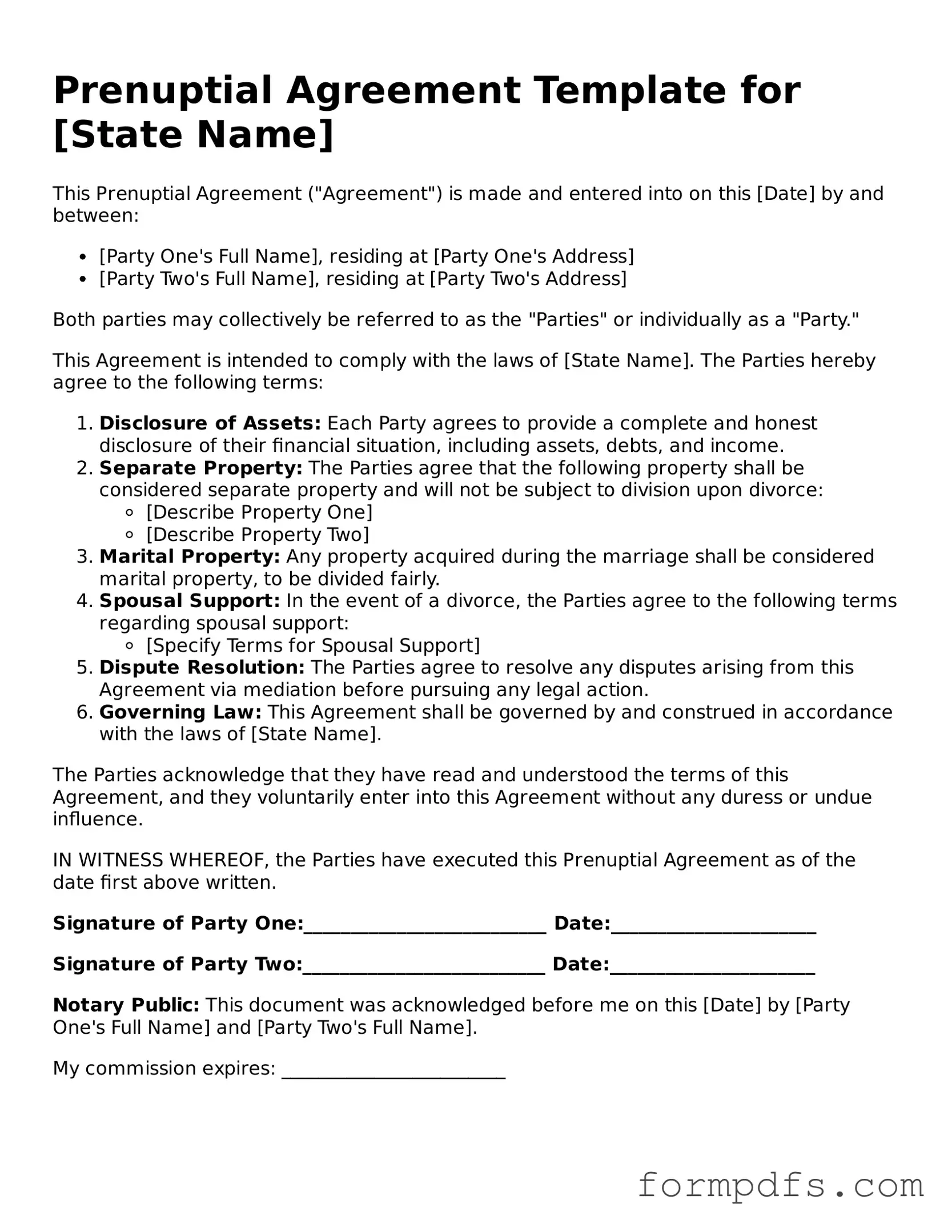What is a prenuptial agreement?
A prenuptial agreement, often referred to as a "prenup," is a legal document that a couple signs before getting married. It outlines how assets and debts will be divided in the event of a divorce or separation. This agreement can also address issues such as spousal support and the management of financial responsibilities during the marriage. By having a prenup, couples can establish clear expectations and protect their individual interests.
Who should consider a prenuptial agreement?
While any couple can benefit from a prenuptial agreement, it is particularly advisable for those with significant assets, business ownership, or children from previous relationships. Additionally, individuals who expect to inherit wealth or have substantial debts may also find a prenup beneficial. It provides a way to safeguard personal finances and clarify financial roles within the marriage.
How does a prenuptial agreement work?
A prenuptial agreement typically takes effect upon marriage. The couple will discuss and negotiate the terms, which can include the division of property, debt responsibilities, and other financial matters. Once both parties agree, the prenup must be signed in the presence of a notary public. It’s crucial that both individuals fully disclose their financial situations to ensure the agreement is fair and enforceable.
Can a prenuptial agreement be modified after marriage?
Yes, a prenuptial agreement can be modified after marriage, but both parties must agree to the changes. It’s important to document any modifications in writing and have them signed by both spouses. This ensures that the updated terms are legally binding. Couples may choose to amend their prenup as their financial situations or life circumstances change.
Are prenuptial agreements enforceable in court?
Generally, prenuptial agreements are enforceable in court, provided they meet certain legal requirements. These include full disclosure of assets by both parties, voluntary agreement without coercion, and a fair and reasonable distribution of assets. However, courts may not enforce terms that are deemed unconscionable or that violate public policy. Consulting with a legal expert can help ensure that the agreement is valid and enforceable.
What happens if we don’t have a prenuptial agreement?
If a couple does not have a prenuptial agreement, the division of assets and debts will be determined by state laws in the event of a divorce. This can lead to uncertainty and potential disputes, as state laws may not align with the couple’s personal wishes. Without a prenup, each spouse may not have control over how their assets are handled, which can complicate the divorce process.
